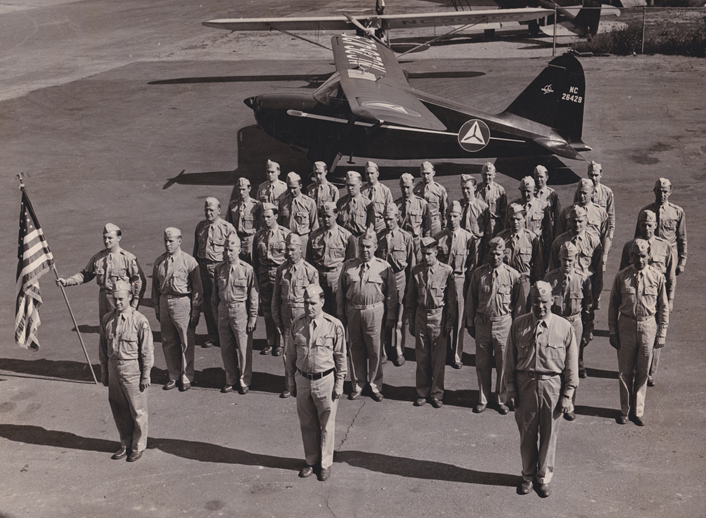About CAP
Civil Air Patrol History
Origins/1936-1941
The origins of Civil Air Patrol date to 1936, when Gill Robb Wilson, World War I aviator, and New Jersey director of aeronautics, returned from Germany convinced of impending war. Wilson envisioned mobilizing America’s civilian aviators for national defense, an idea shared by others.
In Ohio, Milton Knight, a pilot and businessman, organized and incorporated the Civilian Air Reserve (CAR) in 1938. Other military-styled civilian aviation units emerged nationwide, training for homeland defense.
In 1941, Wilson launched his perfected program: the Civil Air Defense Services (CADS). That summer, tasked by Fiorello H. LaGuardia (New York mayor and director of the federal Office of Civilian Defense and also a World War I aviator), Wilson, publisher Thomas H. Beck, and newspaperman Guy P. Gannett proposed Wilson’s CADS program as a model for organizing the nation’s civilian aviation resources.
Their proposal for a Civil Air Patrol was approved by the Commerce, Navy, and War departments in November, and CAP national headquarters began operating on Dec. 1 under the direction of national commander Maj. Gen. John F. Curry. Existing CADS, CAR, and other flying units soon merged under the CAP banner. Public announcement of CAP and national recruiting commenced on Dec. 8.
 World War II and Postwar/1941-1948
World War II and Postwar/1941-1948
In January 1942, German submarines began attacking merchant vessels along the East Coast. With the military unable to respond in force, CAP established coastal patrol flights to deter, report, and prevent enemy operations.








